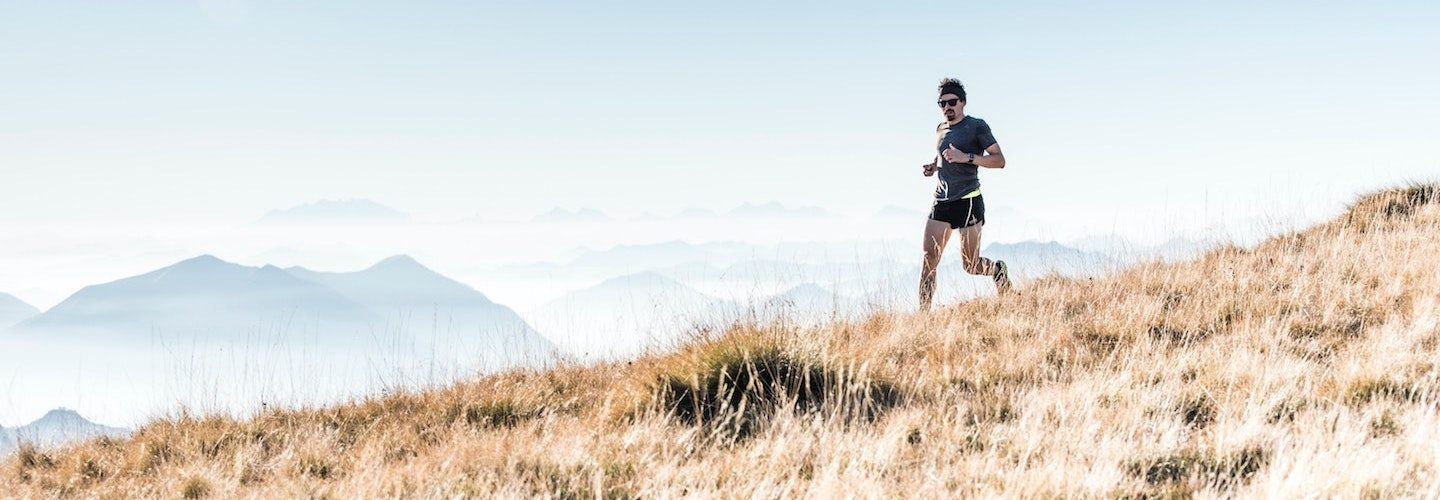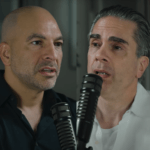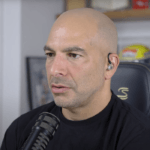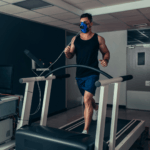Irene Davis is the founding Director of the Spaulding National Running Center at the Harvard Medical School. In this episode, Irene describes how her research of biomechanics and clinical work with running injuries, as well as research by others, has shaped her views on maintaining body alignment and foot health. Irene discusses her argument for the role of modern footwear in running-related injuries and how minimalist footwear helps resolve the subsequent biomechanical issues.
Subscribe on: APPLE PODCASTS | RSS | GOOGLE | OVERCAST | STITCHER
We discuss:
- Irene’s path to her Ph.D., her entry into physical therapy, and her interest in biomechanics [3:20];
- How Irene’s thinking about the use of orthotics has changed [7:15];
- The evolution of the human foot and the transition from walking to running [10:30];
- The evolution of shoes and its impact on running injuries [17:30];
- An overview of running injuries [26:00];
- Cushioned running shoes, heel striking and impact forces [29:30];
- Shin splints [33:45];
- How heel strike patterns promotes knee stress through rate of loading [35:30];
- The critical importance of exercise [42:15];
- Impact forces and injury potential [45:45];
- How shoe cushioning alters impact forces despite forefoot striking [49:00];
- An overview of minimalist shoes [52:30];
- Irene’s protocol for transitioning people out of orthotics [58:45];
- Transitioning to minimalist shoes and a forefoot strike [1:05:30];
- Foot muscle volume, minimalist shoes, and orthotics [1:07:00];
- The recognition of the importance of foot strength in podiatry [1:09:45];
- Minimalist shoes across the lifespan—from children to adults [1:12:30];
- Why learning to forefoot strike on soft surfaces is not the best approach [1:20:00];
- Knee valgus and factors related to knee injury [1:21:45];
- IT band syndrome [1:28:30];
- Physics and ground reaction forces [1:33:15];
- Irene’s approach to retraining a runner’s gait [1:36:00];
- Case study—How the transition to minimalist shoes decreased injury and improved performance [1:42:15];
- Importance of proper movement patterns and the negative influence of our modern environment [1:45:30]; and
- More.
Irene’s path to her Ph.D., her entry into physical therapy, and her interest in biomechanics [3:20]
The path to and focus of Irene’s Ph.D.
- She originally wanted to be in the FBI, but at the time, women weren’t allowed
- Classes in exercise science eventually led her to completing a degree in physical therapy
- Her curiosity led her to complete a master’s degree and Ph.D. in biomechanics
- She completed her Ph.D. at Penn State under Dr. Peter Kavanaugh, who is a pioneer of running mechanics
Irene’s early work as a physical therapist
- Watching her cousin go through physical therapy after being paralyzed in a car accident inspired her to become a physical therapist herself
- She started her physical therapy career in spinal cord rehab
- After starting graduate school, she shifted to outpatient physical therapy
What shifted Irene’s interest towards biomechanics
- Quadriplegics need to move their entire body with just 25% of their muscle – they need to learn to use their bodies in atypical ways
How Irene’s thinking about the use of orthotics has changed [7:15]
Early in Irene’s career, she was a proponent of orthotics
- She prescribed orthotics as a physical therapist
- She taught about orthotics at the University of Delaware
- She simply believed that some people had feet that were incapable of supporting themselves
Irene’s thinking began to change based on her research and when the book Born to Run was published
- Her research led her to realize that people who land on their heels while running incur greater impact forces, and that footwear influences these forces
- This, plus the message in book Born to Run, made her reflect on the traditional approach of physical therapy for other areas of the body – removing support to encourage patients to improve their intrinsic ability
- The permanent nature of orthotics is the opposite of this approach
- Irene says, “And it kind of brought me back to when I was a physical therapist in rehab, where we would try to take away as much support and bracing to our patients, even wheelchairs, a lower back, less lower extremity bracing so that they would use what they had. And yet my thinking in terms of feet was completely opposite. … We don’t brace anything else permanently if you have an orthopedic problem.”
Despite the common thinking that we should be prescribing a shoe type based on an individual’s need for support, a study done by Joe Knapik on thousands of military personnel found that there was no difference in injury rate
The evolution of the human foot and the transition from walking to running [10:30]
Anatomical changes from walking man (Australopithecus) to running man (Homo erectus)
{end of show notes preview}

Irene Davis, Ph.D.
Irene is a professor of physical medicine and rehabilitation at Harvard Medical School. She’s also the founding director of the Spaulding National Running Center—one of the premier centers in the United States devoted exclusively to the diagnosis, treatment and prevention of running injuries in runners of all ages and abilities. Irene holds two bachelor’s degrees, one in exercise science from the University of Massachusetts, and one in physical therapy from the University of Florida. She then went on to earn her master’s degree in biomechanics from the University of Virginia, before finally going on to get her PhD in biomechanics from Penn State.






This was GREAT. Thanks, Peter and Irene. I’ve been in Xero Shoes for a few years and they changed my life.
I ordered Xero shoes after listening to this highly motivational interview. I’m curious to know how Xero shoes impacted you. And are you a runner?
Curious how the vibram shoes compare? I assume they would be classed as minimalist too. They were mentioned but not really compared to the others other than to mention the lawsuit.
Peter, would love to see you interview Ron Hruska from the Postural Restoration Institute on their approach to explaining how the body uses feedback from the ground and how shoes with support can play a role in getting individuals out of those hip and core instability patterns that Irene mentioned.
Peter, Irene, thank you for a great episode. It seems many of these biomechanical injuries are resulting simply from flat feet, what are your thoughts on 1) strengthening the arches of the foot, it seems conventional wisdom is that they cannot be improved and 2) how epigenetics plays a role with flat feet, if you are “born with flat feet” is there any approach to overcome the issue even from a young age other than go barefoot as often as possible?
Those are great questions and I’d be very interested in those answers too, as well as any other resources about contending with “flat feet.”
Regarding flat feet, I found this on the Xero website: https://xeroshoes.com/flat-feet-high-arches-and-running-barefoot/
Great podcast. Concerning the podiatrists working for Nike in early days, Nike undoubtedly choose the answer that allowed them to add value. They could make a shoe that they profited by. Getting people to change their habits and behavior wouldn’t be easy or profitable for a shoe company.
Concerning the first shoes, humanity is all about the tool using. Bob Neanderthal tied a cover to the bottom of his foot and did better at hunting, escaping and migrating. All his friends copied him because they wanted to have that benefit too.
When thinking about extra cushioning causing injury, look at football pads and helmets resulting in more injury (especially versus rugby). Boxing causes hand injuries because boxers think they’re protected and therefore hit harder. Bare knuckle fighters have fewer hand injuries because they hit more carefully and avoid harder targets*
*I don’t have any supporting documentation for these statements.I just collected these ideas over time, but I believe they are correct.
Thank you for this episode. I learned so much! Highly motivating and so interesting. I also checked out the aforementioned documentary. We all watched it. My son was totally flabbergasted. Never realised that teens were capable of this level of fitness, focus and discipline. I can only hope it will inspire him.
The claim is that over a 24 period there is no animal faster than a human. I’ve heard this many times, but I’ve never seen the evidence. After all, there are a lot of different animals out there. Has this comparison been done with every species? Also, who are the “humans” in this claim? I’d believe that Ethiopians could possibly outrun every other animal, but the human form factor is different for different groups. Is it true for someone of Scottish descent? I’d just appreciate some actual concrete evidence.
christopher,
It is well documented that tribal Africans generally are very successful at persistence hunting against most all kinds of prey game.
Beyond Africa, see Wiki:
https://en.wikipedia.org/wiki/Persistence_hunting
More generally, it is also well documented that Inca empire had long distance message runners that would routinely run 200 to 300 mi w/o much break. I don’t know of any running animals that actually do that.
Chris,
in particular read this part, which tells me that humans have this unique ability over all animals, including horses (esp. b/c we can safely carry/get some water during the hunt where they may not):
” In addition to a capacity for endurance running, human hunters have comparatively little hair, which makes sweating an effective means of cooling the body.[1] Meanwhile, ungulates and other mammals may need to pant to cool down enough,[1] which also means that they must slow down if not remain still.[2]”
…
Persistence hunting has even been used against the fastest land animal, the cheetah. In November 2013, four Somali-Kenyan herdsmen from northeast Kenya successfully used persistence hunting in the heat of the day to capture cheetahs who had been killing their goats.[12]
The claim is that over a 24 period there is no animal faster than a human. Turns out, there is 22 mile man vs horse race each June in Wales. See
https://en.wikipedia.org/wiki/Man_versus_Horse_Marathon
Since 1980, a human has won twice, and horses every other time.
Some confounding considerations:
1) Keep in mind that the humans running here are not representative of the species; they are much faster than average. I suspect the horses are more representative of the species.
2) The horse was carrying a human. How would the human fair if they had to carry, say a rabbit the whole way.
3) The race was 22 miles and was not a 24 hour race. Perhaps if the race was 30 miles, more humans would win.
But in balance, I don’t buy that humans are faster than horses over long distances.
Wondering about the impact of bunions with minimal shoes and if exercises can help the transition from traditional shoes?
Hi Peter,
I approached this podcast with great anticipation because I’ve been considering *revisiting* my running form (e.g., gait, foot-strike, etc.) lately. However, while the podcast was interesting and intuitively compelling, most of the rationales presented have been around for over a decade.
I may not have the timeline right, but I believe the minimalist movement and emphasis on forefoot striking reached its high-water mark around the same time, and then slowly fell out of favour as many individuals were developing injuries *because of* their attempt to make this switch. At the same time, you saw the rise of Hokas, and then other brands followed suit, so that now it seems as if *most of* the brands are going full cushion, with varying degrees of stack height and drop. As well, I’ve often read that it’s not so much what part of your foot makes contact with the ground first, but rather where your foot is *in relation to your hips* when it makes contact that matters.
As well, for every anecdote about switching to minimalist shoes reducing injuries and getting people to run without orthotics, pain free, etc., I have lots of personal anecdotes from people switching to cushioned shoes and setting PRs and seeing issues like Achilles tendinopathy dissipating after years of struggle.
And then there are the performance considerations as well. What did Kipchoge break 2h in? What are most of the elites running in? Yes, highly cushioned shoes.
This long lead up to say I wish you had asked Dr. Davis about these potentially countervailing arguments. Yes, perhaps they could be explained away by, for instance, runners not transitioning slowly enough into minimalist shoes to mitigate against injury. Perhaps it’s a separate debate regarding the performance *value-add* of cushioning, carbon plates, etc. Perhaps this particular episode should be viewed more properly as one focused on addressing running pathologies. You tell me…
I mentioned I’ve recently starting thinking about my own running form lately. When I see photos of myself running, I hate the fact I’m a pronounced heel striker, notwithstanding my cadence is high, my relative speed for my age is pretty darn good, etc. I just don’t like the way I *look* when I run. As well, when I do *consciously* shift to forefoot running, it feels (and sounds) lighter and smoother, but there is certainly more load on the calf, achilles, foot complex. I *want* to be convinced of the points made in the podcast, but I just don’t feel like I got the full picture.
I’d either like to see Dr. Davis address some of these opposing points, or listen to a guest from the opposite end of the spectrum.
All the best!
They did mention at one point that heel striking allows for a longer stride, which could explain a potential speed benefit. Not only that but the size of the cushioning is adding cm/inches to that already extended stride.
@Trent
It’s true that, once you get your cadence up, the only other lever to increase your speed is to increase your stride length, but interestingly, most experts I’m familiar with say that you need to increase your stride length *out the back*, so to speak. In other words, lengthen your stride behind you, but keep your foot strike underneath your centre of gravity. If you lengthen it in front of you, obviously that’s going to promote a heel strike, amplify braking force, and set some people down the road to shin splints as their tib ant has to work harder to slow down the forefoot as it comes down after the heel.
Take a look at Kipchoge’s stride. To me he looks like the model of perfect running form—quick turnover with a long stride out the back, and a very slight forefoot dab before the heel makes contact, underneath his hips. It’s another point of confusion for me because, if most (but not all; there are some exceptions) of the elites have similar running form, and most are now using (and setting PRs in) cushioned shoes, then what combination of biomechanics and shoe technology is contributing here? When I think of cushioned shoes, my first thought is, “Well, the cushion lessens the impact on the heel, and there must be some rebound effect that promotes speed…” Can that reasoning somehow be modified to fit the elites who don’t typically heel strike?
You might investigate the concept of Biotensegrity as proposed by Dr. Levine in relationship to you comments about the foot stability influencing things all the way up to the head. https://biotensegrity.com/
It would also be interesting to explore the concept of the original Earth Shoe which had a slight heal drop to mimic the foot in sand while walking.
I watched a Youtube video a few months back by Mark Wildman (https://www.youtube.com/watch?v=YQB1kM3Q31I). He talks a lot about training barefoot, though that specific video was about what type of shoes to wear if you have to wear shoes. There is a lot overlap between this episode and what I’ve seen in his videos.
Peter, I think Altras were the “begins with A” shoe you were talking about. Zero heel-to-toe drop but with a cushion. I own a pair and like them, but after hearing Dr. Davis speak about the drawbacks of partial minimalist shoes, I’m going to try my Xero Prios on asphalt again.
Thank you for this interview. I found it interesting and compelling. I am reviewing Dr. Davis’ research and methods for information I can use in my own practice.
The one other area of the body that gets “splinted forever” is the jaw for TMJ issues. Bite splints are recommended but do not resolve the problem, they simple protect the teeth from bruxing. I would love to hear you interview someone similar to Dr. Davis on this issue. I find it hard to believe that we can’t rehab jaw musculature and alignment with anything other than orthodontia (traumatic) and bite splints. Myofunctional exercises are interesting but practitioners who work with them are few and far between and exorbitantly expensive. I’d like to understand if there are researchers like Dr. Davis for this region that I haven’t been able to find through online searches.
Lisa Butler DO
Altra is probably the “brand that starts with an A” you were trying to think of. More cushioned than the other mentioned brands, but still zero drop and with a wide toe box. I wear Altra Escalante or Solstice to work, as I’m on my feet on a hard surface all day. At home or running quick errands, I actually love cheap, slip-on “water shoes” of the sort you can get in a million different “brands” online. They are completely flat and thin-soled, with stretchy, breathable uppers that don’t confine the toes or foot at all. They are the closest I’ve found to going barefoot, with just a bit of sole protection. Probably not suitable for running, however, as they wouldn’t stay in place well and would wear out quickly.
This was interesting. I failed on orthotics and developed foot pain, then switched to minimalist shoes almost 12 years ago.
I would be interested if this new information affects prosthetics down the line for amputees. Those are designed for heel strike walking.
Great podcast! BUT you just barely skimmed over a topic I am sure lots of people are interested in, and that is running in cushioned but zero drop shoes, like Altras. I am very curious what Irene thinks about running in Altras. From the podcast I believe she might think that running on the balls of the feet is the most important factor to run “properly,” which Altras help people do because of the no heel lift. Irene also mentions slight lateral movements from a cushioned shoe, even forefoot striking, but are these forces something to worry about or are they very small forces that are not a problem? Minimalist shoes seem like the best option, but I think a slight cushion is needed when hiking or running on rocky or sharp hiking trails.
As someone who has only worn minimalist footwear (running almost always off-road on trails if I can help it), and in everything from sandals (Luna, Bedrocks), to Vibrams, NB Minimus, Merrell Trail Glove, Tadeevo (excellent reasonably priced slipper type shoe), and Altras, I agree that there is a role to mix up your footwear depending on what you are doing. I wear my most minimalist thin flexible stuff (Vibrams, Tadeevos, or the original Bedrock Earthquake sandal) for short runs of 5-8km on trails – it helps maintain my proper form, and is like a workout for my feet. But if run commuting with a load on pavement daily (as I do in the winter), I wear Altras as I find the cushioning just protects enough so my feet don’t feel too beat up day after day. Same if doing a very long trail run or race, or over rocky terrain. Once you’ve hardwired your muscle memory for correct form, you don’t have to be minimalist all the time. But I’m always in zero-drop shoes.
Great points. I came here to recommend options outside of the main 3 listed in the show notes. I’m a fan of Merrell Vapor Gloves for road running and general use. Flexible, lightweight, look mostly normal, and cheap compared to the niche brands (e.g. on sale for $63 on Merrell’s website). I’ve had most of the ones you mentioned, but the Tadeevos are new to me. Thanks for the introduction – look cool!
Google Zola Budd. The Olympian.
Great stuff. I went this long transition in 2014 when, after years of cycling, I was diagnosed with Morton’s Neuroma in both feet. My doctor and podiatrist (the same ones that prescribed orthotics…) recommended surgery. After reading about the relatively low success rate with these procedures, and having no interest in going under the knife if there was ANYTHING I could do, I came upon the notion of going minimalist and starting the journey (sock-doc.com was huge for me). I dumped all the orthotics and over-built shoes and was on my way.
Long story short, it took 9 months before I could go an entire day being barefoot or in minimalist shoes pain free. Do not rush this process. Six years later my feet are strong, I have arches for the first time I can remember, and I enjoy hiking and running in barefoot shoes and sandals (the looks and occasional comment are priceless). Life is good.
Thank you Peter and Irene for a deep dive into barefoot running. A quick question about what other shoes are considered true barefoot shoes. Would you place Merrell Vapor Glove and New Balance Minimus in this category? You mentioned Inov-8 during the podcast, is it the Inov-8 Bare model you are talking about? In the past I ran in partially barefoot shoes and got a metatarsal fracture, so I want to make sure I don’t do that again! Thank you.
Merrell Vapor Gloves have to get the nod as minimal – easily rolled up into a pocket. NB Minimus – it depends. I haven’t had them in awhile, but the ones I had seemed more like Nike Free’s in the partial minimal category.
Peter – you asked about books. Apart from Born to Run which changed my life vis-a-vis the importance of core strength and barefoot running -the best introduction to barefoot running book I have read is by “Barefoot “Ken Bob Saxton – Barefoot Running Step by Step. He mentions everything you and Irene talk about in the transition to barefoot running, and also has great exercises for people to do. He is one of the first people to ever advocate barefooting, and he has a rather old-school website here https://barefootrunning.com/